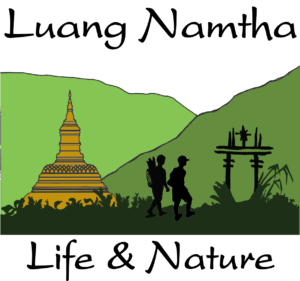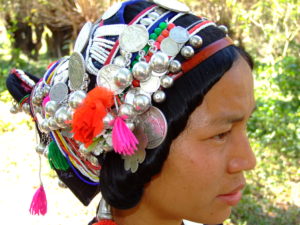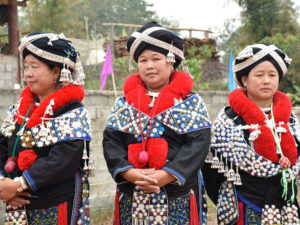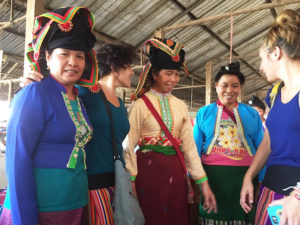Muang Sing District
Muang Sing District is located in Luang Namtha’s far northwest bordering Myanmar and China’s Yunnan province with historic Muang Sing Town as its administrative and economic centre. Its landscape is predominantly mountainous with elevation ranging between 540 to 2,094 meters, traditionally dominated by forest and upland swidden farming.
The weather turns cool and dry from November to February with temperatures dropping as low as 5°C at night. The average temperature is 25°C. In this time winter woolies will be needed in the morning and evening. March and April are the hottest months, with the mercury approaching 40°C. Rains fall between May and September.
Ethnic Diversity
Muang Sing has a total population of 23,500 inhabitants, spreading over 95 villages. One of the main reasons to visit is to encounter the ethnic diversity which makes this crossroads so interesting. Muang Sing is a traditional Tai Lue, Tai Neua and Akha cultural nexus, as well as a trade center for Tai Dam, Hmong, Yao Mien and Lolo.The most common groups are Akha accounting for about half of the residents followed by Tai Lue accounting for 30%. While Akha primarily inhabit upland areas, Tai Lue villages are some of the province’s oldest continuously inhabited settlements in the northern reaches of the Muang Sing Valley.
Muang Sing Attractions
Muang Sing features a number of interesting places to visit, whilst trekking tours and villages visits are best done with a guide (to ensure villagers benefit), the following sites can be easily explored independently.
Xieng Tung Stupa
Xieng Tung Stupa is the most important Buddhist site in Muang Sing, said to contain the Buddha’s adam’s apple. To the left of the temple are some stairs which lead to a sacred fountain and a sacred stone. The biggest festival of the year, Xieng Tung Stupa Festival or “Boun That Xieng Tung” is held every year here during the full moon of the 12th lunar month, around late October, early November. You can see the stupa when arriving from Luang Namtha, it is located on hill 5.5km from the town centre.
Historical Buildings
Close to the post office, around the corner from the District administration offices, you can find the old French military fort, which is now occupied by the Lao Army. Across the street is the old hospital built in 1919. You can also search for the old city wall and moat, now partly dry.
Muang Sing Museum
The most significant building is the Muang Sing Museum with it’s unique Tai Leu design. Once the residence of Jao Fa (Prince) Phanya Sekong, more of an economically powerful figure in the area than a prince, now it is privately owned. The collection presents local culture and history.
Open 9-11.30am and 1.30-3.30pm Mondays to Fridays. 5,000kip entrance fee. 5,000kip extra if you would like to watch the Akha film.
Muang Sing Market
Visit the market early morning to see the diversity of people who come into to town to sell their produce and what they also forage. It is a great place to try locally prepared foods, such as soybean paste, waffles and local sweets. Tai Dam women also sell their crafts there.
Temples and Monastries
The Tai Leu are devout Buddhists, hence there are 23 temples and monastries in the area. Luang Temple, the most important temple or “wat” in the area, is located off the main road near the museum. Namkeo Luang Temple, which has a large monk residency. It is located on the road to Xiengkok, a short walk in town. Xieng In and Xieng Lae temples are a short walk from Namkeo Luang Temple.
Villages close to Muang Sing Town
These villages are easily accessible by bike or tuk tuk. However, you will have a better experience to go with a local guide, many of them speak the local languages and know the villagers, enhancing your experience. They also can cater to your interests, whether it be food, handicraft, or photography. Guides can be booked at the Muang Sing Tourist Office or through local Muang Sing tour companies.
Ban Nammai & Ban Phoudontan – Yao Handicraft
Ban Koum – Lao Whiskey Distilling
Ban Siliheung – Khao Soy (Rice Noodles)
Ban Nongbuea & Ban Xieng Yun – Tai Dam Handicraft
Ban Nammdaet Mai – Akha Handicraft









 Users Today : 43
Users Today : 43 This Month : 1405
This Month : 1405 This Year : 40038
This Year : 40038 Total Users : 85766
Total Users : 85766 Views Today : 136
Views Today : 136 Who's Online : 1
Who's Online : 1